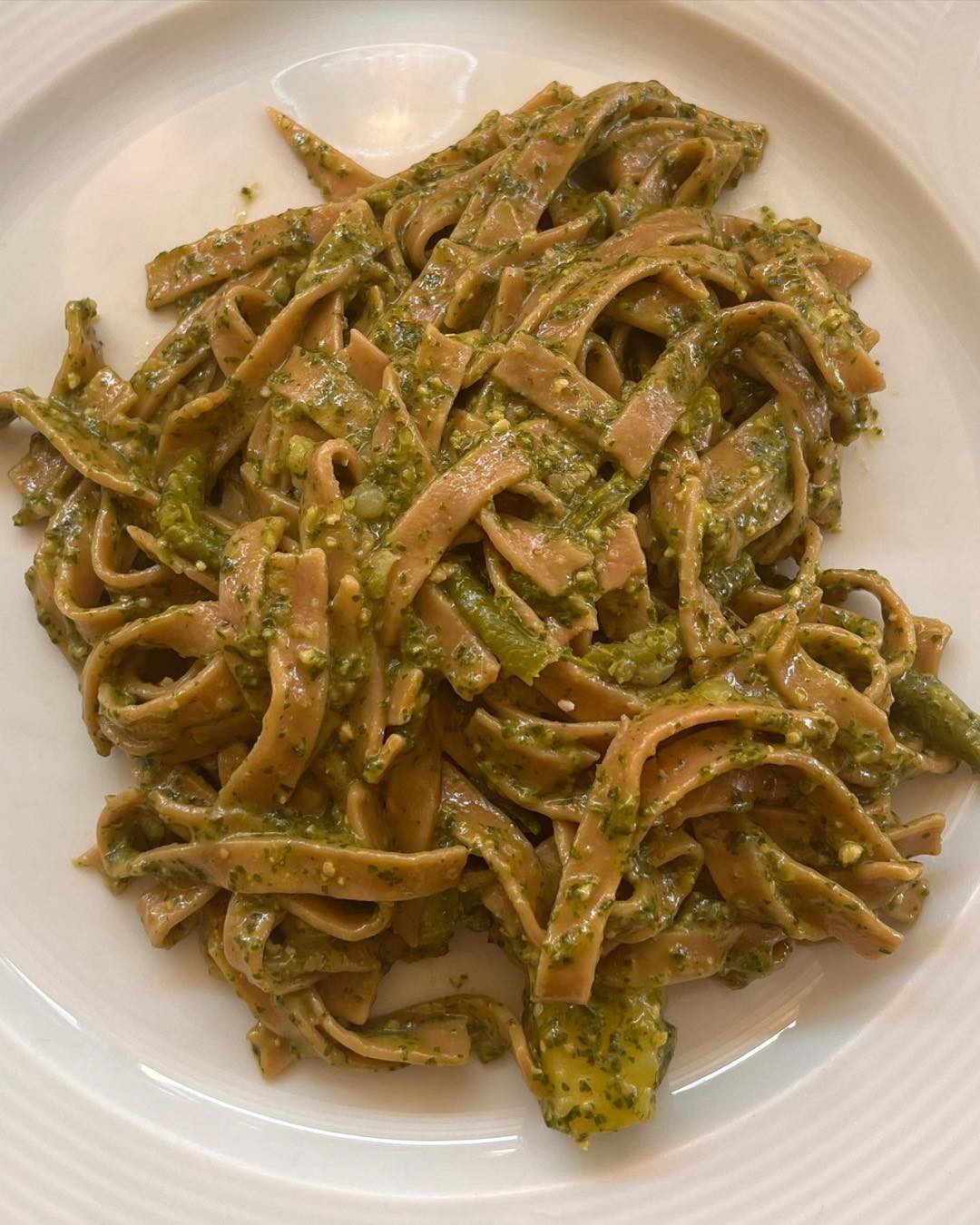Pesto and its Pasta types
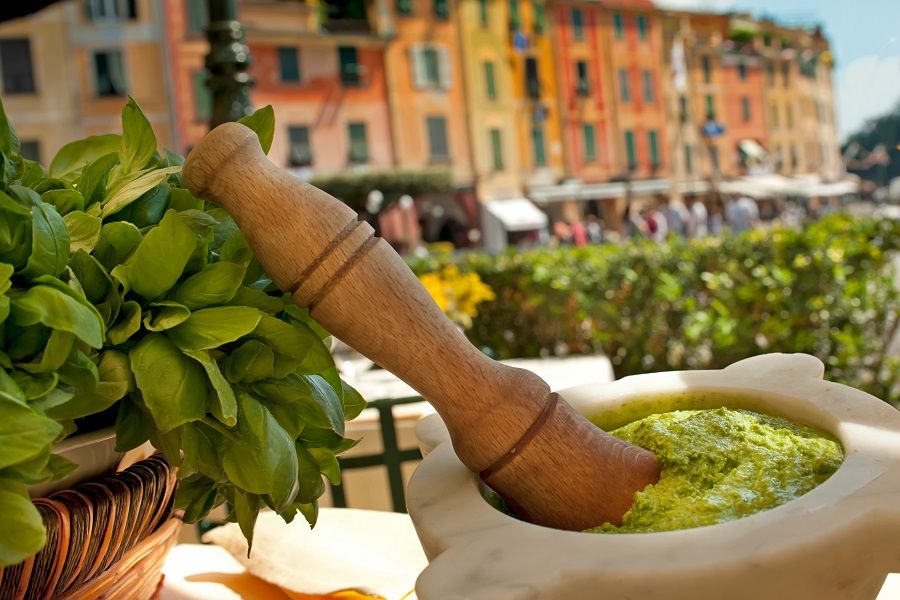
Trofie, battolli, trenette, testaroli, mandilli de saea, and corzetti. Choose your delicacy.
The natural end of DOP basil is well-known, it’s in the marble mortar, rigorously with a wooden pestle. Ancient tools, combined with elbow grease, result in the world’s most beloved sauce: pesto. This is how tradition dictates, surviving modernisation and household appliances. But after preparation, the real question is: which type of pasta enhances this fantastic Genoese sauce? In this case, as with preparation, the only thing to do is trust those who have been making pesto for centuries, namely the Ligurians.
Trofie
The fresh pasta with a famous shape originates in the territory overlooking the Golfo Paradiso, between the municipalities of Sori, Avegno, Recco, and Camogli, in the province of Genoa. Trofie began as a family and traditional product to be made at home until about fifty years ago when some local merchants decided to expand their trade to Genoa, where the term “trofie” had always and only referred to gnocchi. The success was almost unexpected, and the spread was quite rapid. There are various explanations for why trofie are called that. One of the most common versions is that the word seems to derive from the Genoese “strufuggiâ,” meaning to rub, referring to the necessary movement to curl them with the hand rubbing the pasta on the surface.
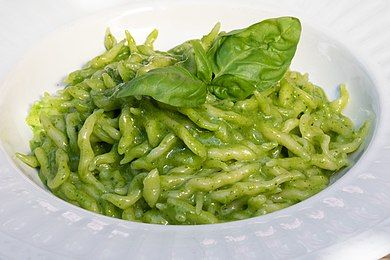
Trenette
This is another dish derived from the Genoese tradition, and like many dishes in this tradition, it has humble origins. In the past, in Genoa’s pasta shops or stalls, known as vermicellai, a type of pasta considered second quality was sold and called “avvantaggiata” because, containing a certain amount of bran, it was sold at a lower price. In reality, this type of pasta, thanks to its natural roughness and distinctive flavor, is excellent when paired with pesto, especially when accompanied by potatoes and green beans.
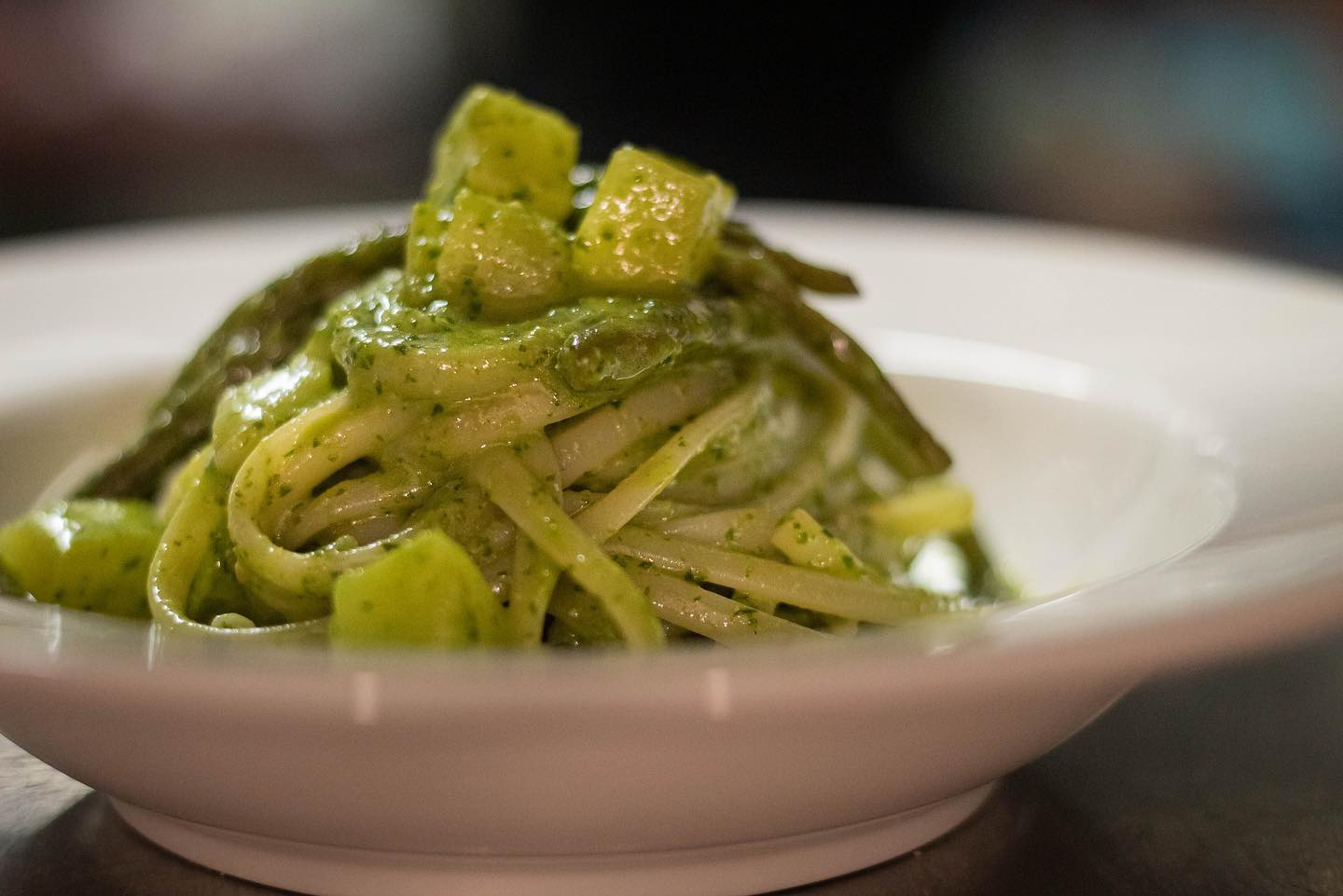
Testaroli
For some years, this type of pasta from Lunigiana has been a Slow Food presidium. They are prepared by cooking them in cast-iron containers called “testi.” A cooking method for foods that might be unique in Italy, certainly native to Lunigiana. The testarolo, a thin unleavened bread with a circular shape, about 40-45 centimetres in diameter, is still traditionally cooked in the testo. The ingredients include wheat flour, lukewarm water, and salt mixed into a batter that is continuously blended and oxygenated until it reaches a homogeneous and velvety consistency. Once ready, the testarolo is traditionally cut into diamonds and softened in boiling water: it is thrown into boiling water – with the heat off – for a few minutes.

Mandilli de saea
Mandilli de Saea is a typical Ligurian dish, named after its appearance as it looks like real silk handkerchiefs. “Mandillo“ is a Genoese term derived from the Arabic word meaning handkerchief. It is a handmade pasta rolled very thin and then cut into many squares. You need to knead the flour with egg yolk and a pinch of salt, roll out the dough using a rolling pin to create an extremely thin sheet, which is then cut into squares resembling handkerchiefs.
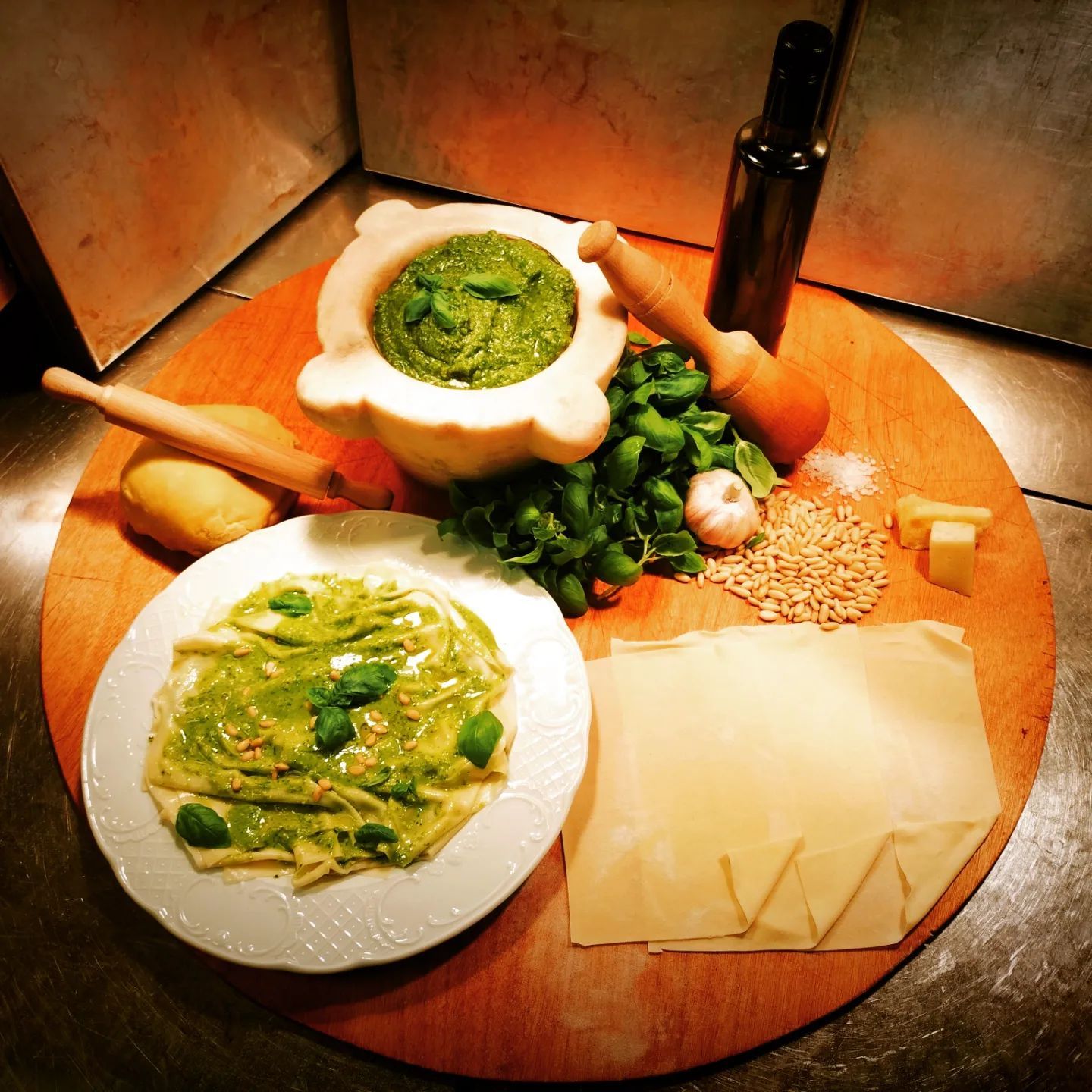
Corzetti
Crafting corzetti requires infinite patience, as it is a disc-shaped pasta obtained through a wooden mold that decorates it. Today, dedicating time to making corzetti is increasingly challenging due to the lengthy process involved. Even obtaining the traditional mold requires preparation, as there are very few skilled artisans capable of crafting them. Their tradition is undoubtedly ancient, dating back to the Renaissance, where families would imprint their emblems or distinctive decorations on corzetti using a wooden mold, turning it into a true gastronomic emblem.
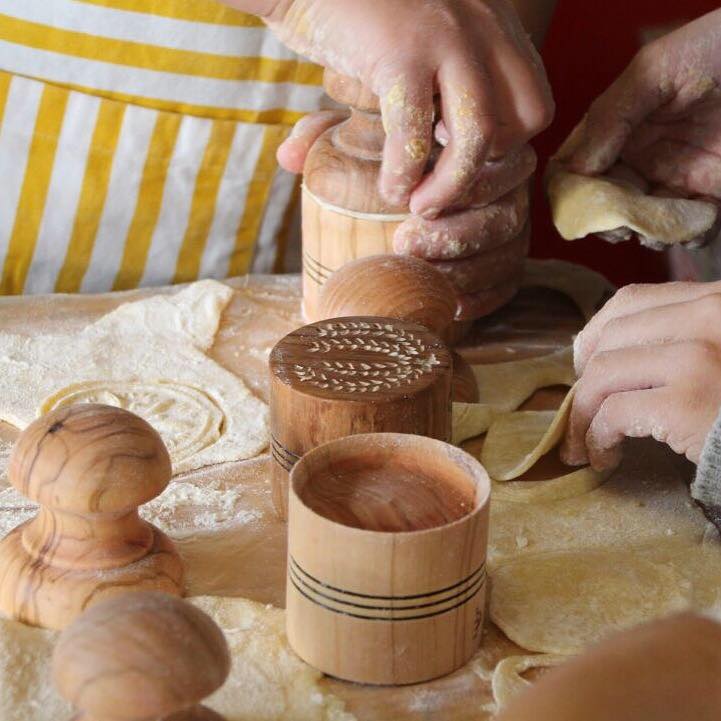
Battolli
This fresh pasta is made with chestnut flour, white flour, and eggs, served with pesto and “nauin” turnip, which only grows in the gardens of Uscio and its surroundings. The village hosts the annual Sagra dei Battolli. Chestnut flour, another staple in past kitchens, is used in the preparation. Battolli are large tagliatelle made with chestnut flour, a humble dish born from the resources available in the countryside. This fresh pasta is produced in the eastern Ligurian region, particularly in the Fontanabuona Valley.
